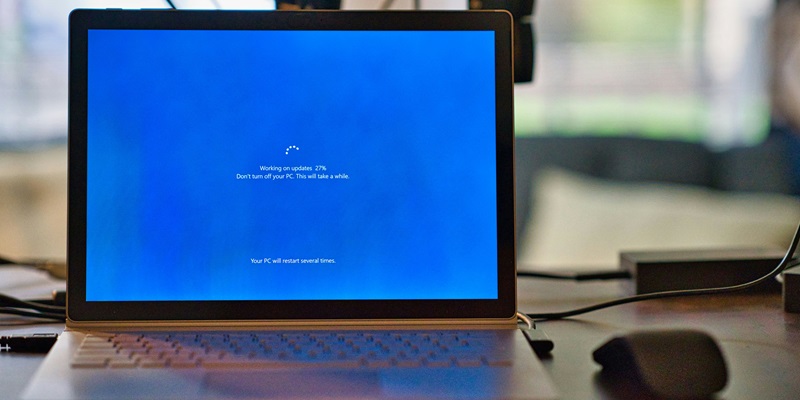For many users, the transition from Windows 10 to Windows 11 has been met with mixed feelings, often marked by concerns over usability and familiarity. RevertSV, a mod introduced by Wayne Williams, seeks to address these concerns by transforming Windows 11 into a more recognizable and accessible interface. This mod reconfigures several aspects of Windows 11, including the Start menu, taskbar, and even built-in applications, making them resemble their Windows 10 counterparts. Given the significance of user preference in software design, RevertSV stands out as an intriguing solution for those who favor the older system while still leveraging the newer operating system’s underlying advancements.
While RevertSV offers an appealing proposition, it’s important to recognize the limitations and potential risks involved. Some of the changes imposed by this mod may revert with updates, and certain features don’t function as intended. Yet, the very existence and popularity of RevertSV underscore a broader sentiment. A subset of Windows users misses the intuitive design and functionality of Windows 10. This desire for familiarity over innovation reveals much about user needs and software development trends, providing valuable insights into how tech companies might address these concerns moving forward.
Modifying Windows 11 Features
Emulating Windows 10 Design Elements
One of the standout features of RevertSV is its ability to emulate the design elements of Windows 10, thereby addressing criticisms leveled at the newer Windows 11 interface. The mod reconfigures the Start menu, taskbar, search functionality, and various built-in applications. For instance, the Start menu, often seen as one of the most significant changes in Windows 11, is modified to resemble its Windows 10 counterpart more closely, providing users with a familiar and more intuitive interface. Similarly, the taskbar and its functionalities are altered to reflect the older version, thereby reducing the learning curve for those who have grown accustomed to Windows 10.
RevertSV’s alterations extend beyond superficial design changes. It also tweaks various system applications like Notepad and Paint to maintain the look and feel of their Windows 10 versions. Even UWP (Universal Windows Platform) applications are given a makeover to ensure a cohesive user experience. However, these modifications are not foolproof. Software updates can revert some of these changes back to their original Windows 11 versions, causing occasional disruptions. Despite these potential setbacks, the value RevertSV provides in terms of user comfort and reduced friction is significant, making it a compelling choice for many.
Navigating Limitations and Risks
Despite its enticing promise of transforming Windows 11 into a more familiar landscape, RevertSV does have its caveats that potential users need to consider carefully. For one, updates to the operating system can undo some of RevertSV’s modifications, requiring users to reapply the changes or wait for updates to the mod itself. Additionally, not all features of Windows 11 can be seamlessly integrated into a Windows 10-like interface. For example, the Cortana button in Windows 11 doesn’t function as expected when altered by RevertSV, nor can it often be removed entirely. These limitations can detract from the seamless experience users might hope for.
The potential risks associated with such deep modifications highlight the importance of a cautious approach. Users are strongly advised to implement RevertSV in a virtualized environment at first. This strategy minimizes the potential impact on the main operating system and provides a secure space to test the mod’s functionality. This recommendation aligns with the cautious implementation often advocated for other significant system modifications, like those that turn Windows 10 into Windows 7. The overarching principle is to safeguard the system and data integrity by thoroughly vetting the mod in a controlled setting before full deployment.
Balancing Familiarity and Innovation
User Preference for Familiarity
The popularity of RevertSV and similar mods reveals a critical insight into user preferences: many users value familiarity and a frictionless user experience over new features and design changes. This isn’t to say that innovation is unwelcome; rather, it underscores the importance of balancing new functionalities with user-friendly design. RevertSV exemplifies this approach by offering a viable path for users who appreciate Windows 10’s interface while using the more advanced features of Windows 11. The mod serves as a bridge, merging the best of both worlds and showcasing the adaptability of the Windows platform to user needs.
RevertSV’s existence underscores the notion that not all users are quick to embrace changes, especially when they disrupt long-established workflows. The software industry can take a valuable lesson from this by ensuring future updates and releases consider the balance between innovation and user comfort. This balance is pivotal for retaining user satisfaction and ensuring smooth transitions between software versions. By addressing these preferences, companies can cultivate a more loyal user base that feels heard and valued, ultimately fostering a more positive overall experience.
The Future of Customization in Operating Systems
The transition from Windows 10 to Windows 11 has been met with mixed reactions, largely influenced by concerns over usability and a lack of familiarity. To address these issues, Wayne Williams introduced RevertSV, a mod that adjusts Windows 11 to resemble the more familiar Windows 10 interface. This mod alters various components such as the Start menu, taskbar, and built-in applications, aiming to make Windows 11 more user-friendly for those who prefer the older system’s look and feel, while still benefiting from the newer operating system’s advancements.
Despite its appeal, RevertSV comes with limitations and potential risks. Updates can potentially override some of the mod’s changes, and certain features may not function as intended. Nonetheless, the popularity of RevertSV highlights a broader sentiment among a segment of Windows users who value the intuitive design and functionality of Windows 10 over innovation. This preference emphasizes important insights into user needs and software development trends, suggesting how tech companies can better address these concerns in the future.

